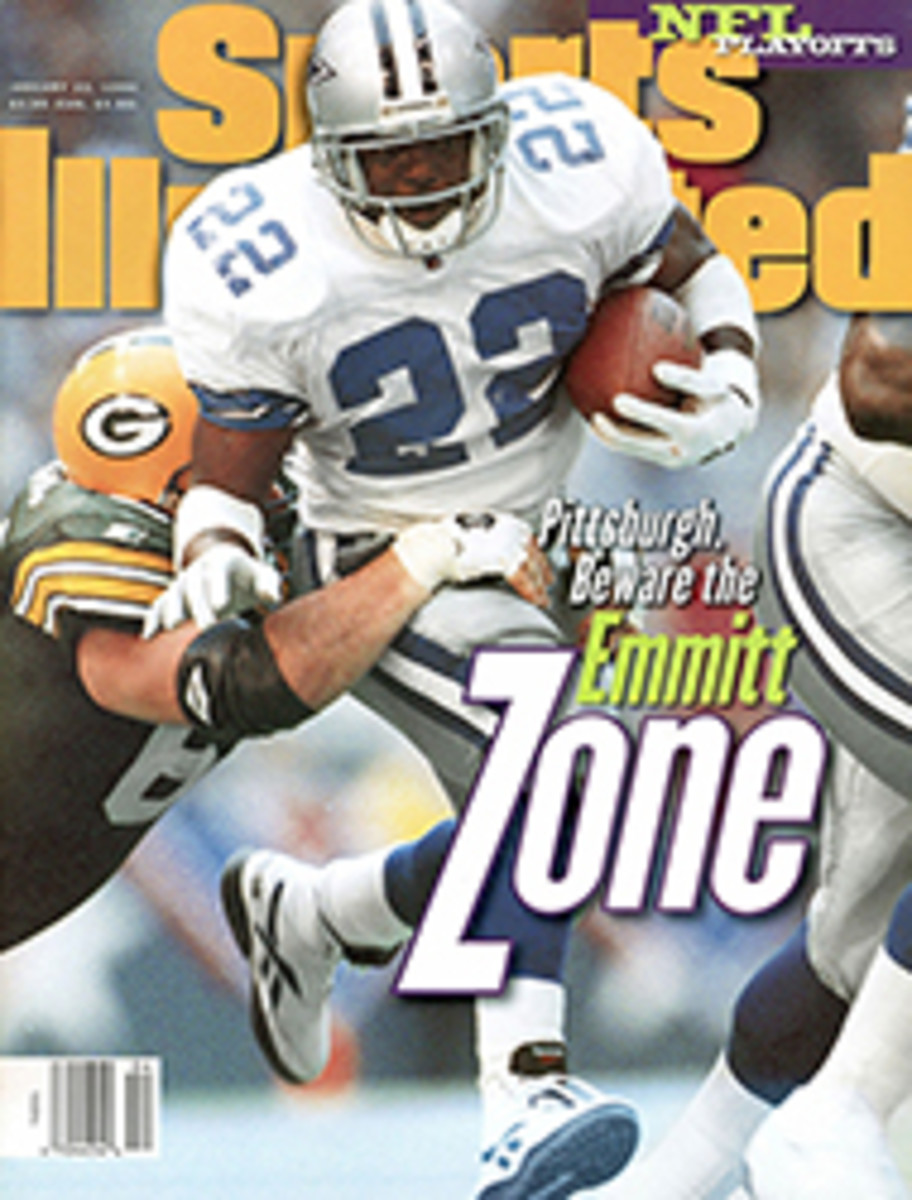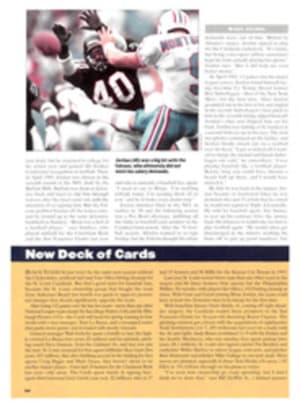
GETTING GOOFY THE SUPER-SIDECUT SKI, OR GOOFY, HELPS NOVICES KEEP FROM SLIDING ON THE SLOPES
For Judy Pond the steepest, most difficult trails at her
favorite ski resort, Vermont's Okemo Mountain, might as well
have had off-limits signs. Whenever the 54-year-old
schoolteacher happened upon a run that was precipitous, icy or
decked with large moguls, "I'd just become this frumpy lady,
this timid soul," she says. "And I'm not that way at all. I
started to feel old."
In December 1994 Pond, who had been skiing for three years, got
a chance to test the prototype of a curious new ski. She quickly
realized that her days of snowplowing down the bunny hill were
over. "At first I thought, These are stupid-looking things," she
says of the hourglass-shaped skis, which were 4 3/8 inches wide
at the tips and tails and a mere 2 3/8 inches wide underfoot.
"But by my fifth turn, I thought, Oh, my. You just stand on
them, and they turn."
Pond attempted to purchase a pair, only to find that the
manufacturer had none for sale yet. "I was hot for them," she
says. "Ordinarily I don't ski the expert trails. But with this
ski I'd go to difficult runs and think, I can do this."
Soon a lot of people will feel the same way. The skis Pond
tried--called super-sidecuts, hourglasses, parabolics or
goofies--can make life easier and more enjoyable for almost
anyone on the slopes. Turning with super-sidecuts is easier than
with traditional skis because of the super-sidecuts' curvy shape
and abbreviated length, which can be four to six inches shorter
than conventional skis. The shape helps less-than-expert skiers
make tight, stable, speed-controlling turns even under difficult
conditions.
"This is the most significant ski-design development since
Howard Head put metal in skis in the late '50s," says Tim
Petrick, vice president and general manager of K2 North America.
At least 60 ski schools around the country have bought
super-sidecuts and are using them as teaching tools. Most of the
world's ski makers will build super-sidecuts as soon as their
factories can be retooled. And many followers of the ski
industry are so impressed, they think that within a few years
traditional skis will be as scarce as rope tows. "We believe
this is the Big Bertha driver or Prince tennis racquet of skis,"
says Mike Adams, president of Monark Sporting Goods, Inc., the
company that distributes Elan SCX parabolics in the U.S.
"With traditional equipment, only the most advanced skiers could
carve a turn," says Ivan Petkov, president of S Ski, which
produces only super-sidecuts. "It was the type of turn you could
make if you had the time, skill and money to learn it. These
radical skis allow people to carve right away."
Petkov, who raced on the Bulgarian national ski team from 1970
to '76, came up with the idea for his skis four years ago while
teaching at Aspen Mountain. Frustrated by equipment that he felt
was hindering his pupils, he dreamed about building a ski that
could enhance the students' efforts to be more balanced and
comfortable on the hill. "I wanted to make something that would
help people ski better," Petkov says.
While super-sidecuts have mostly been built for intermediates,
by next season there will be more than a dozen models meant to
appeal to strong skiers. World Cup racers haven't jumped on the
bandwagon, though the shorter, rounder skis they've been
competing on for several years were an influence in the first
super-sidecut design.
As Petkov tinkered with his design, other ski manufacturers were
developing their own super-sidecuts, in part to capitalize on
the meteoric growth of snowboarding. While it is generally
believed that boarding has attracted participants because of its
antiestablishment reputation, in reality its ranks have swelled
because snowboarding is surprisingly easy to learn. It might
take a novice skier years to learn to negotiate a steep run, but
a new boarder might be able to do it after a few months.
"Super-sidecuts open up a whole new avenue of fun on skis," says
Doug Buteux, a Washington-based ski instructor. "There's no
definitive, right way to ski them yet. It's skiing for fun, not
form."
As Pond jets hither and yon across the most treacherous terrain,
she does have a couple of complaints. "People make fun of my
skis," she says. "And my friends say the skis look like
duck-billed platypuses."
This is freelance writer Daniel Green's first piece for Sports
Illustrated.
COLOR PHOTO: SCOTT MARKEWITZ Parabolic skis have turned around the art of turning. [Skier using parabolic skis]

